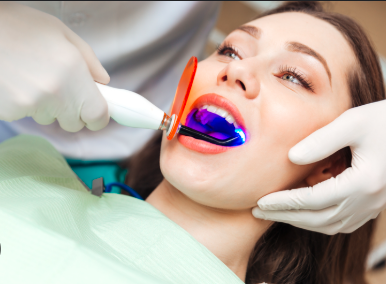Laser tools have become increasingly common in modern dental offices. A dentist may use lasers for both cavity treatment and routine cleanings, offering an alternative to traditional methods. These tools rely on focused light energy to remove decayed tissue, clean deep surfaces, and support long-term oral health. Laser-based techniques provide a quieter, more precise experience, which appeals to many patients seeking more comfort during visits.
Reducing Discomfort and Recovery Time
One advantage of using lasers is the potential for reduced pain during and after procedures. Traditional drilling methods create vibration and friction, which can irritate nearby tissue. Lasers, by contrast, produce minimal contact and avoid the mechanical pressure that triggers discomfort. Because of this, a dentist using lasers often completes fillings or cleanings with less numbing and faster recovery.
This reduced irritation can also benefit patients with dental anxiety. The quiet operation of laser tools feels less invasive, and the shorter healing time appeals to those managing a busy schedule. While the experience varies by patient, many describe less sensitivity and fewer post-treatment symptoms compared to standard methods.
Supporting Better Precision for Cavity Treatment
Laser tools allow dentists to focus narrowly on the area of concern. In cases of early decay, a dentist may remove only the affected portion without disturbing nearby enamel. This approach helps preserve tooth strength over time. For more advanced cases, lasers may still offer a cleaner, more accurate removal of damaged tissue than conventional methods. Additionally, lasers often sterilize the treatment area during use. This added effect may reduce bacteria in and around the cavity site, which can lower the risk of secondary infection. While not a replacement for good hygiene, this added benefit supports better long-term results.
Enhancing Cleanings for Long-Term Maintenance
During a routine cleaning, a dentist may use lasers to target plaque and tartar buildup. Lasers break apart hard deposits without scraping the tooth surface, which helps avoid microdamage to enamel. In deeper areas, such as pockets along the gumline, laser treatment can remove bacteria and smooth tissue edges. This process supports better gum health and may slow the progression of gum disease.
In some cases, laser-assisted cleanings replace traditional scaling and root planing for patients with mild to moderate periodontal conditions. Because the laser works below the gumline without cutting, recovery often happens faster, with less bleeding or swelling.
Adapting Laser Use to Each Patient’s Needs
Not every patient receives the same type of laser treatment. Dentists evaluate several factors before selecting a tool, including cavity depth, tissue type, and overall oral health. For example, hard-tissue lasers may be used to treat enamel and dentin, while soft-tissue lasers handle gums and inner cheeks. Each tool requires training, and experienced providers adjust settings for safety and precision.
Balancing Innovation with Preventive Care
While laser dentistry brings new opportunities, it does not replace standard preventive measures. Regular brushing, flossing, and dental visits remain the foundation of good oral health. A dentist may introduce lasers as part of an overall plan but will still encourage consistent daily habits. This combination of technology and prevention helps maintain healthy teeth and gums over time.
Patients who receive laser-based fillings or cleanings often continue with their usual hygiene routines. In fact, many become more proactive about oral care after experiencing the benefits of updated techniques. With improved comfort and outcomes, laser dentistry encourages people to return for routine maintenance without hesitation.
Considering the Future of Dentist Treatments
Laser tools reflect broader changes in dental technology aimed at improving comfort and results. As more practices adopt these methods, patients can expect shorter appointments, more personalized care, and fewer side effects. While not every procedure can be handled with lasers, the number of applications continues to grow.
